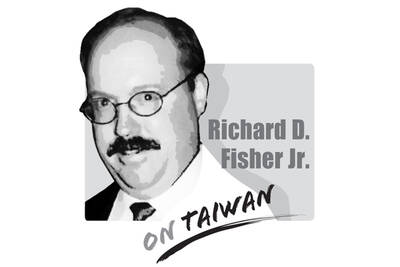A joint research team from Chang Gung University and Taipei Chang Gung Memorial Hospital in August last year discovered the pathogenesis of anti-interferon-gamma autoantibodies; the National Health Research Institutes and Taichung Veterans General Hospital last year offered insight into the cause of type 2 diabetes, finding inflamed T cells that might cause diabetes and obesity; Academia Sinica researchers last year made a breakthrough that could help treat the mutation of a gene responsible for 90 percent of Rett syndrome cases; and another group of Academia Sinica researchers last year discovered a curcumin derivative that might help prevent Alzheimer’s disease. These are just some examples of Taiwan’s world-class medical achievements, breakthroughs and international contributions.
Having been on the receiving end of the international community’s assistance eradicating several communicable diseases, Taiwan, now a nation with advanced medicine and healthcare, is eager to contribute to better global health.
However, its eagerness has been rejected by the WHO.
The World Health Assembly (WHA), the organization’s highest decisionmaking body, is to take place in Geneva, Switzerland, from May 22 to 31 and yesterday was the last day for online registration to the annual conference. As of press time last night, Taiwan had not been invited.
China’s Taiwan Affairs Office Minister Zhang Zhijun (張志軍) yesterday said that so long as Taiwan refuses “the fundamental condition,” which he described as the recognition of the “one China” principle and the so-called “1992 consensus,” there is no basis for Taiwan’s participation in the WHA, or other international organizations for that matter.
While China’s bullying is reprehensible, it is just as disappointing to see that the WHO is indifferent to the fact that its autonomy has been usurped by China.
The WHO’s objective is “to build a better, healthier future for people all over the world,” its Web site says. It says that it “remains firmly committed to the principles set out in the preamble to the Constitution. Among the principles enshrined in the WHO Constitution include: The enjoyment of the highest attainable standard of health is one of the fundamental rights of every human being without distinction of race, religion, political belief, economic or social condition; The health of all peoples is fundamental to the attainment of peace and security and is dependent on the fullest co-operation of individuals and States; The achievement of any State in the promotion and protection of health is of value to all; and Unequal development in different countries in the promotion of health and control of diseases, especially communicable disease, is a common danger.”
Against the backdrop of its mission and constitution, is the WHO being hypocritical? Why is an international organization spearheading the global response to epidemic prevention allowing China to hold health concerns of 23 million people in Taiwan to ransom?
Those who argue that Taiwan is not a “state” and therefore cannot taken part in the WHO should know that statehood is not required for observer status to the WHA and related bodies.
By yielding to China, the WHO is jeopardizing the global epidemic prevention network; by discriminating against Taiwan, the WHO is essentially allowing the global healthcare network to be broken, especially since Taiwan is in such close proximity to China, which is notorious for concealing epidemics.
The WHO said its ethical principles include “impartiality and independence from external sources and authorities,” and “respect for the dignity, worth, equality, and diversity of all persons.”
If only WHO officials know how ironic these words are.
On Sunday, 13 new urgent care centers (UCC) officially began operations across the six special municipalities. The purpose of the centers — which are open from 8am to midnight on Sundays and national holidays — is to reduce congestion in hospital emergency rooms, especially during the nine-day Lunar New Year holiday next year. It remains to be seen how effective these centers would be. For one, it is difficult for people to judge for themselves whether their condition warrants visiting a major hospital or a UCC — long-term public education and health promotions are necessary. Second, many emergency departments acknowledge
US President Donald Trump’s seemingly throwaway “Taiwan is Taiwan” statement has been appearing in headlines all over the media. Although it appears to have been made in passing, the comment nevertheless reveals something about Trump’s views and his understanding of Taiwan’s situation. In line with the Taiwan Relations Act, the US and Taiwan enjoy unofficial, but close economic, cultural and national defense ties. They lack official diplomatic relations, but maintain a partnership based on shared democratic values and strategic alignment. Excluding China, Taiwan maintains a level of diplomatic relations, official or otherwise, with many nations worldwide. It can be said that

Victory in conflict requires mastery of two “balances”: First, the balance of power, and second, the balance of error, or making sure that you do not make the most mistakes, thus helping your enemy’s victory. The Chinese Communist Party (CCP) has made a decisive and potentially fatal error by making an enemy of the Jewish Nation, centered today in the State of Israel but historically one of the great civilizations extending back at least 3,000 years. Mind you, no Israeli leader has ever publicly declared that “China is our enemy,” but on October 28, 2025, self-described Chinese People’s Armed Police (PAP) propaganda
Chinese Nationalist Party (KMT) Chairwoman Cheng Li-wun (鄭麗文) made the astonishing assertion during an interview with Germany’s Deutsche Welle, published on Friday last week, that Russian President Vladimir Putin is not a dictator. She also essentially absolved Putin of blame for initiating the war in Ukraine. Commentators have since listed the reasons that Cheng’s assertion was not only absurd, but bordered on dangerous. Her claim is certainly absurd to the extent that there is no need to discuss the substance of it: It would be far more useful to assess what drove her to make the point and stick so